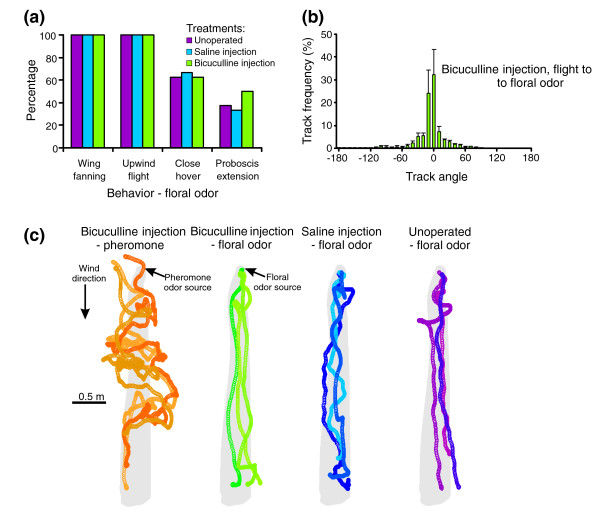Figure 4.
Injection of bicuculline into the MGC does not influence a moth's abilities to navigate to floral odors. (a) Behavioral measurements on unoperated (purple), saline-injected (blue) and bicuculline-injected (green) moths in a wind tunnel supplied with a floral odor. For all behaviors, there were no significant differences between treatments (G test: p > 0.10). n = 3–8 moths per treatment. (b) Measurement of track angles of bicuculline-injected moths flying toward floral odor source. A prominent peak at zero degrees indicates that the drug injected into MGC did not affect their navigation behavior mediated by floral odor. (c) Moth flight tracks to pheromone (orange) and floral odors (green, blue and violet). When injected into the MGC, bicuculline caused moths to increase the number of casts in the flight and a decrease in the ability to locate the pheromone source (orange flight tracks). In contrast, bicuculline injected into the MGC did not influence the ability of the moths to successfully navigate to, and locate, the floral odor source (green flight tracks). Saline-injected (blue flight tracks) and unoperated (violet flight tracks) moths exhibited similar flight behaviors to the floral odor as those moths treated with bicuculline. For each treatment three moth flight tracks were selected using a random number generator (denoted by tracks of different color shades). The tracks are made up of circles corresponding to video images captured at 0.016 s intervals.

